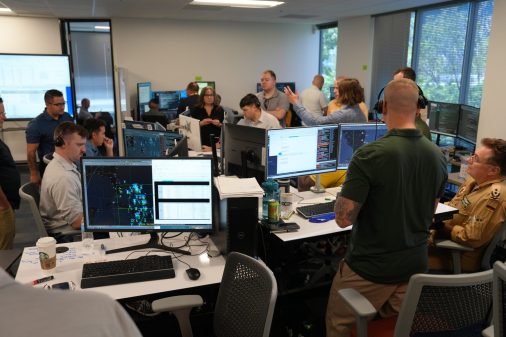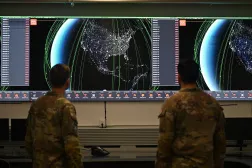Space Force gets new senior leader for cyber and data

Charleen Laughlin has moved from the Joint Staff to the Space Force to become the new deputy chief of space operations for cyber and data — a key role as the service pursues digital modernization.
Laughlin took the position a few weeks ago, according to Lt. Gen. DeAnna Burt, deputy chief of space operations for operations, cyber and nuclear.
Laughlin previously served as the chief digital and AI officer for the Joint Staff and vice director for the Joint Staff’s J-6 command, control, communications, and computers/cyber directorate. Prior to that, she was deputy director for the Joint All-Domain Command and Control (JADC2) cross-functional team. She has also served as chief of staff to the Department of Defense chief information officer, among other cyber-related roles she’s held at the DOD.
The Space Force is splitting out the cyber function — known as the “6” in U.S. military parlance — from Burt’s role to create more of a standalone position for that work.
“We decided last year we needed to investigate how we would separate that, … so we basically merged what was then CTIO within the Space Force and what I had as an S6. We merged those together to build an S6 standalone,” Burt explained Monday during a Mitchell Institute event.
“We just hired a three-star equivalent SES, Ms. Char Laughlin … She fully understands being a chief information officer and a chief data analytics officer — all those things. So we recognize the importance of AI … and machine learning and automation, and I think now separating the 6 out on its own will allow us to drive at this at an even greater level of detail, while at the same time protecting all of that data and the cyber protections and the things that are needed. So, my successor will not have the … deputy chief of space operations for operations, cyber and nuclear [portfolio] — it will just be operations and nuclear. And the cyber function is now to Char,” said Burt, who is getting ready to retire.
The position of deputy chief of space operations for cyber and data was previously held on an acting basis by Col. Nathan Iven, who is now serving as a special assistant in that office, according to his LinkedIn profile.
The appointment of Laughlin comes as the Space Force is being positioned to take on a greater role in ground moving target indicator (GMTI) and air moving target indicator (AMTI) mission sets.
The initiation satellites for the GMTI mission are starting to be launched, and an analysis of alternatives for AMTI is expected to be delivered this fall, according to Burt.
“We talked earlier about GMTI. How do I quickly machine-to-machine go from sensing a moving target to getting it to a shooter on the other end in the timelines they need to be able to action it before it’s a fleeting target and gone? Those are all going to have to be machine-driven, they’re going to have to be automated. That’s going to have to be — we’re talking in a matter of sub minutes to make that happen and for that to be successful,” Burt said.
She continued: “We step to the AMTI discussion that you talked about, [and] it gets even faster, right? So I think the future of AI/ML and automation in the Space Force absolutely has to happen. An example, today we do this a lot … with space domain awareness. We have both our own dedicated sensors that do space domain awareness, you have contributing sensors, you have commercial now — a very robust commercial sensing capability for space domain awareness. How do you harness and put all of that together? The machine will much faster, with artificial intelligence, tell me a pattern of life of a satellite and then very quickly notice, based on the data coming in, hey, it’s doing something different — and highlight that to an operator to very quickly address is that nefarious, or is there an anomaly, or what’s going on? And I think that’s going to continue to be important for space traffic management, as well as from a space superiority perspective as we continue to move out as a service. So there’s definitely growth for that. This is an area that is absolutely critical that we spend more time on.”
She suggested that Laughlin will be able to help the Space Force deal with those challenges.
“We’re excited to have her on board,” Burt said. “But that is a definite growth area, and one we know based on the things we’re seeing with GMTI, AMTI and [the Space Development Agency] and for space superiority is going to continue to be important as we try to close our kill chains and provide those kinetic and non-kinetic effects that were in the warfighting structure and … framework. How we would deliver those is absolutely going to be enabled by AI and ML.”






